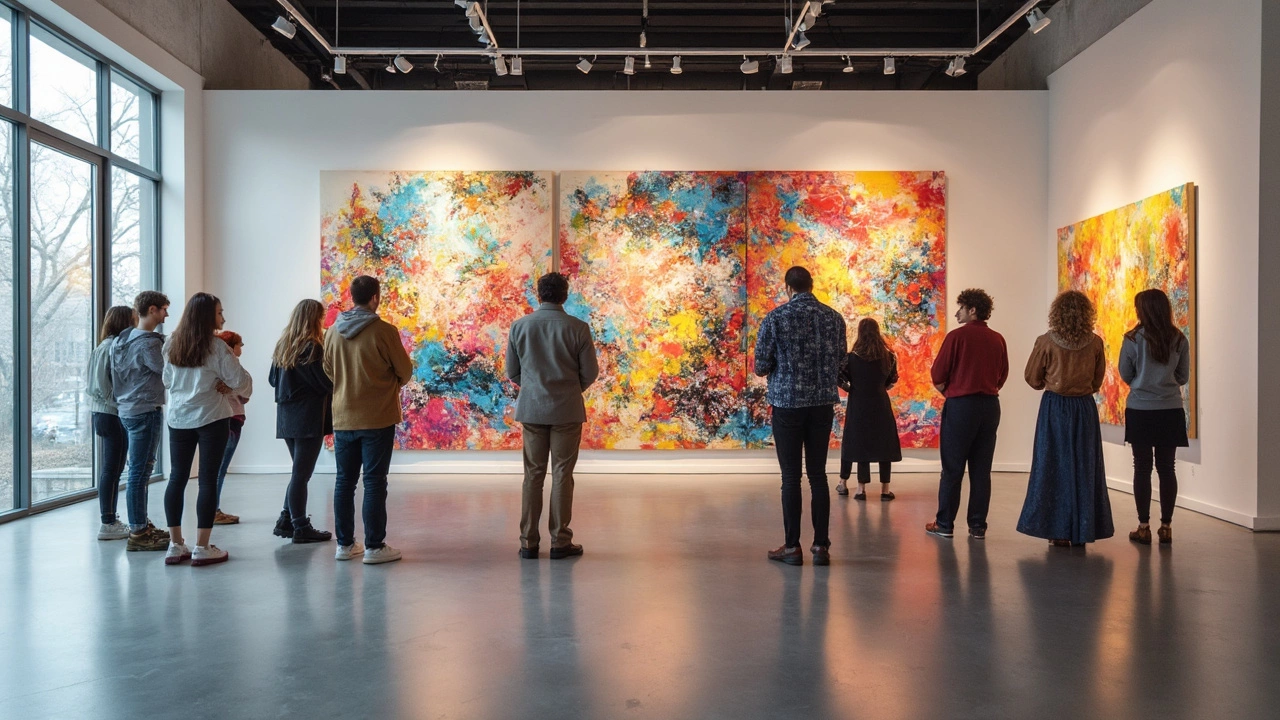Meaning in Art – How to Understand What Art Says
Ever stared at a painting and wondered what the artist was trying to tell you? You’re not alone. Meaning is the invisible thread that links a work of art to your own experience. In this guide we’ll break down how to spot that thread, whether you’re looking at an abstract canvas, a modern sculpture, or a classic portrait.
Why Meaning Matters
Finding meaning turns a picture into a conversation. When you can name the feeling or story behind a piece, you remember it longer and enjoy it more. It also helps you talk about art with friends, curators or collectors without sounding vague. For example, our post “What Does Abstract Art Really Mean?” shows how a splash of color can voice frustration, hope or simply pure joy.
Scanning for meaning is easier when you ask yourself three quick questions: What does the piece remind me of? What symbols are repeated? How does the colour or texture affect my mood? Answering these gives you a personal map that guides deeper research.
How to Decode Different Art Forms
Abstract Paintings – Look for colour relationships and shapes that repeat. A jagged line might suggest tension, while soft blues could whisper calm. Our article on abstract art explains that you don’t need a textbook; just follow the feeling the brushstrokes give you.
Portraits – The eyes are the first clue. Check the gaze: a direct stare pulls you in, a sideways glance can hint at mystery. The post “Eyes in Portraits: Why Artist Focus Matters for Emotional Impact” digs into how those tiny details shape the whole story.
Sculpture – Touch matters (figuratively). Notice the material: rough metal can feel industrial, while smooth clay feels organic. In “Easiest Sculptures for Beginners,” we discuss how simple forms still carry big ideas, like a twisted wire representing tension.
Modern & Contemporary Art – These works often play with cultural trends. Look for familiar objects placed out of context—think a vending machine in a gallery. Our piece “Most Modern Art Styles” points out how digital and AI pieces ask us to reconsider what creativity even means.
Don’t forget to check the artist’s background. A painter who grew up near the sea might embed wave motifs as a nod to home. A sculptor trained in architecture may use geometric patterns to echo building design. These hints give you a shortcut to meaning.
When you’re stuck, read the title or any artist statements. Titles are like clues; a work called “Lost Hope” already tells you the mood. If the artist leaves a note, it can confirm or challenge your interpretation—both are useful.
Finally, share your thoughts. Talking with others often uncovers angles you missed. Online forums, museum talks, or even a comment on a blog post can spark fresh ideas. Remember, meaning isn’t a single answer; it’s a dialogue between you and the artwork.
Ready to put these tips to work? Browse our tag page for articles on abstract art, portrait details, sculpture basics and modern style trends. Each piece gives you a hands‑on example of how meaning shows up in different media. The more you practice, the faster you’ll catch the hidden messages in any artwork you encounter.

12 Jun 2025
Contemporary art isn’t about painting perfect landscapes or making pretty sculptures. The core idea is to get you thinking—sometimes even questioning what art can be. This article breaks down the key concept driving contemporary art today, reveals how artists tackle big ideas, and introduces ways you can connect with the art yourself. Expect practical tips to understand exhibitions or even start your own collection. You’ll see that the world of contemporary art is more open and exciting than you might think.
Continue reading...

29 May 2025
This article breaks down the real reason abstract art works and what makes it stand out. It explains how abstract art isn’t about painting real objects but about ideas, feelings, and the freedom to create. Get insights into how artists use color, form, and movement to connect with us in surprising ways. You'll pick up straight-talking facts, a look at famous abstract artists, and tips for understanding and even making your own abstract art. Perfect if you want to 'get' abstract art without feeling lost or overwhelmed.
Continue reading...

